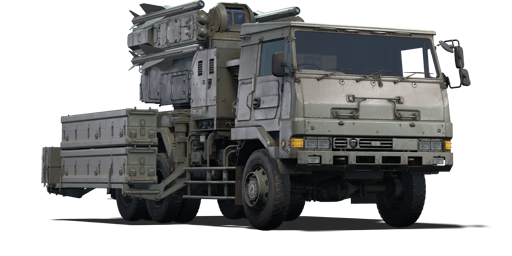



The Type 81 (C) is an upgraded version of the Type 81 Surface-to-Air Missile (81式短距離地対空誘導弾) or Tan-SAM (短SAM), a Japanese-developed SAM system currently in service with the JGSDF. Development of the Tan-SAM Kai began in 1989 to fill the gap between the short-range FIM-92 Stinger and the medium-range MIM-23 Hawk, and the upgraded system was officially designated SAM-1C in 1995. The Tan-SAM Kai introduced two seeker variants: a phased-array pulse-Doppler active radar seeker and an infrared and visible light imaging seeker. While the Type 81 operates as part of a multi-platform SAM system—including an FCS and a radar unit that can track targets and provide mid-course guidance—the IR/optical variant is capable of operating independently.
It was introduced in Update "Kings of Battle". The Type 81C can be considered the bigger brother of the Type 93, offering bigger, meaner, and larger both vehicle and missiles. While it's larger, the missile itself still offers great missile guidance with a maximum overload of 35 G, 955 m/s on top of a visual guidance mode which will further increase its hit probability against IRCM/ECM jammers present on high-end helicopters. One problem the Type 81 retains from the Type 93 is the lack of radar, while it offers a thermal camera making the visual spotting of aircraft easier, it still requires situational awareness to find to targets.
| Ammunition | Type | Armor penetration (mm) at a distance: | |||||
|---|---|---|---|---|---|---|---|
| 10 m | 100 m | 500 m | 1000 m | 1500 m | 2000 m | ||
| AAM | — | — | — | — | — | — | |












Mobility | |
|---|---|
Protection |
|---|
Firepower | ||
|---|---|---|